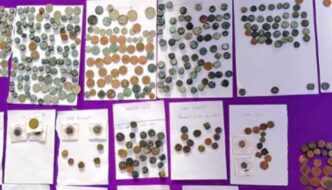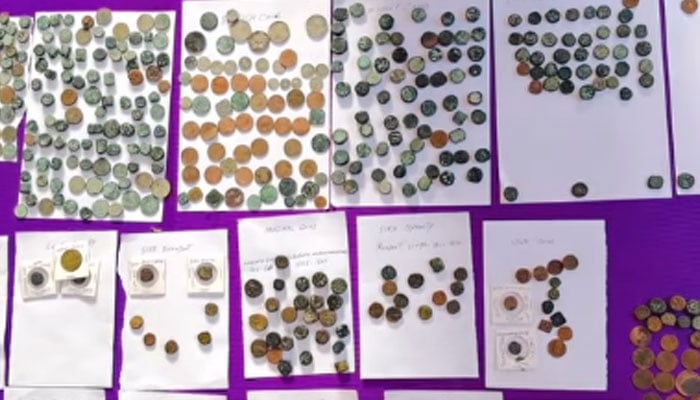Certainly! Here is a comprehensive summary of the discovery of ancient coins brought by floodwaters from the Koh-e-Suleman range in Punjab:
💰 Floodwaters from Koh-e-Suleman Unearth 2,000-Year-Old Coins in Punjab
📍 Overview of the Discovery
Recent flash floods originating from the Koh-e-Suleman mountain range in Punjab, Pakistan, have unearthed a remarkable collection of ancient coins and artifacts, some dating back 2,000 years. This unexpected archaeological treasure was revealed near Sakhi Sarwar in Dera Ghazi Khan District as floodwaters swept through the tribal belt, carrying historical objects from various eras .
🏛️ Historical Significance and Composition
The discovered items represent a fascinating timeline of South Asian history, including:
Kushan Empire coins from the reign of Vima Deva Kushan (circa 2nd century AD)
Islamic period coins from Arab, Central Asian, and Khorasan dynasties
Indian subcontinent coins from the Lodhi, Tughlaq, Durrani, Sikh, Mughal, and British periods
International coins from Chinese dynasties
🔍 Archaeological Context
This discovery is particularly significant as it reveals how natural phenomena like floods can expose previously hidden archaeological materials. The coins were initially found by local residents who noticed them in the flood debris near mountain streams. The political administration and relevant archaeological departments have since taken these artifacts into protective custody .
Officials emphasize that these are not merely pieces of metal but important markers of ancient civilization. The engravings on the coins depict the region’s rich history, the grandeur of former empires, and evidence of ancient trade routes that connected different regions and cultures .
🗺️ Comparison with Similar Discoveries in Pakistan
Table: Recent significant archaeological coin discoveries in Pakistan
| Location | Year | Period | Significance | Source |
|---|---|---|---|---|
| Dera Ghazi Khan (Koh-e-Suleman) | 2025 | 2,000 years (Kushan to British) | Multiple dynasties, international trade coins | |
| Mohenjo-Daro | 2025 | Kushan Empire (2nd century AD) | Buddhist shrine coins, similar to 1931 findings | |
| Takht-e-Bhai | 2018 | Parthian (1st century AD) | Gandhara civilization coins | |
| Islamabad Airport | 2014 | Multiple periods | Smuggling attempt prevention |
🌊 Context of the 2025 Pakistan Floods
This discovery occurs against the backdrop of devastating floods that have affected large parts of Pakistan since June 2025. These floods have primarily impacted:
Khyber Pakhtunkhwa
Punjab
Sindh
Balochistan
Azad Kashmir
The floods have resulted in significant casualties (over 883 deaths nationwide as of September 2025) and widespread displacement, with approximately 4.225 million people affected and 1.8 million displaced . While causing immense destruction, the flooding has paradoxically served as an unexpected source of archaeological revelation, exposing historical materials that had remained buried for centuries.
🔬 Future Archaeological Plans
The district administration has confirmed that archaeologists will soon begin excavations in the area to search for more buried treasures. This systematic approach aims to ensure proper documentation and preservation of any additional findings, potentially shedding further light on the region’s ancient history .
🌍 Global Climate Connections
This phenomenon reflects a broader pattern where climate change-induced extreme weather events are increasingly revealing archaeological materials worldwide. Similar discoveries have been reported in various regions where flooding, erosion, or drought exposed previously hidden historical artifacts .
📜 Conclusion
The discovery of these 2,000-year-old coins in Punjab’s floodwaters represents a significant archaeological find that provides valuable insights into the region’s rich historical tapestry. While the 2025 floods have brought considerable destruction to Pakistan, they have also unexpectedly contributed to our understanding of the area’s ancient civilizations and their connections to broader cultural and trade networks across Asia.







